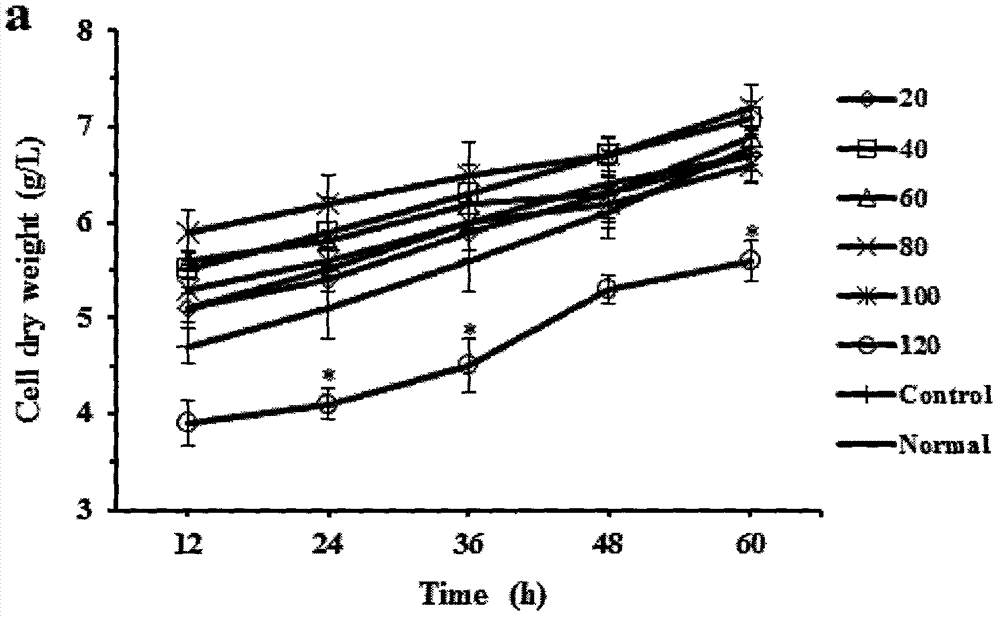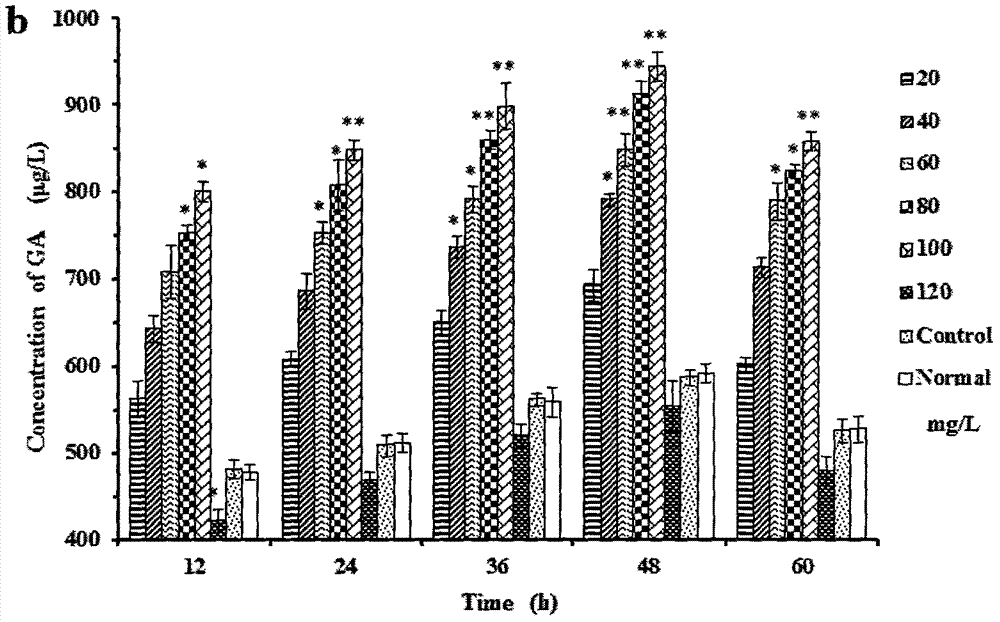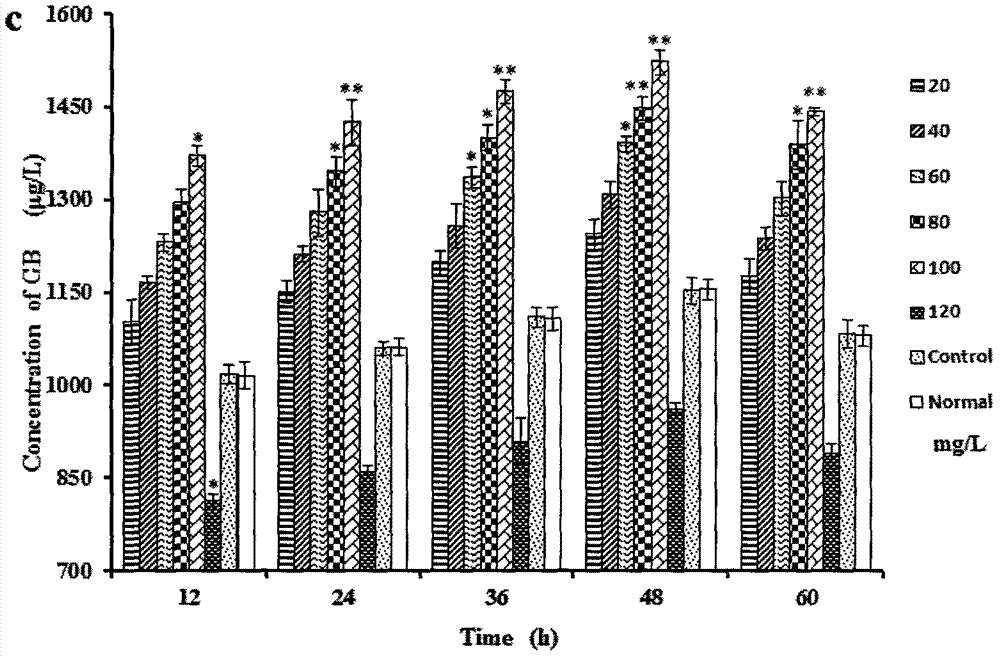Gingko cell culture system-based study for biosynthesizing ginkgo terpene lactones from levopimaradiene
A technology of ginkgolidene and pipine diene, which is applied to the determination/testing of microorganisms, microorganisms, plant cells, etc., and can solve the problems of complex chemical total synthesis steps, long plant growth cycle, and difficulty in regulation
- Summary
- Abstract
- Description
- Claims
- Application Information
AI Technical Summary
Problems solved by technology
Method used
Image
Examples
Embodiment 1
[0022] Effects of levopipine diene (LP) on the growth of ginkgo stem cells (CMCs) and dedifferentiated cells (DDCs) and the content of ginkgolidene
[0023] (1) Cultivation of Ginkgo CMCs and DDCs
[0024] The medium used for Ginkgo suspension cells is MS medium, supplemented with vitamin C (50.0mg / L), sucrose (30g / L), and DDCs with naphthaleneacetic acid (NAA, 2.0mg / L) and indolebutyric acid (IBA, 2.0 mg / L), 2.0mg / L NAA and 2,4-dichlorophenoxyacetic acid (2,4-D, 2.0mg / L) were added to CMCs, the pH value of the medium was 5.75-5.80, and the contents were divided into 250mL cones In a shaped bottle (containing 100mL culture medium), sterilize by high temperature steam at 121°C for 20 minutes, cool to room temperature after sterilization, subculture the amount of cells to 50g / L, place on a shaker after subculture, rotate at 110rpm, 25°C Cultivate in the dark.
[0025] (2) The setting of the experimental group
[0026] Ginkgo suspension cells were pre-cultured (100mL medium) f...
Embodiment 2
[0034] Detection of Expression Levels of Key Enzymes in Ginkgo Suspension Cells by PCR
[0035] (1) Cultivation of Ginkgo CMCs and DDCs
[0036] The medium used for Ginkgo suspension cells is MS medium, supplemented with vitamin C (50.0mg / L), sucrose (30g / L), and DDCs with naphthaleneacetic acid (NAA, 2.0mg / L) and indolebutyric acid (IBA, 2.0 mg / L), 2.0mg / L NAA and 2,4-dichlorophenoxyacetic acid (2,4-D, 2.0mg / L) were added to CMCs, the pH value of the medium was 5.75-5.80, and the contents were divided into 250mL cones In a shaped bottle (containing 100mL culture medium), sterilize by high temperature steam at 121°C for 20 minutes, cool to room temperature after sterilization, subculture the amount of cells to 50g / L, place on a shaker after subculture, rotate at 110rpm, 25°C Cultivate in the dark.
[0037] (2) The setting of the experimental group
[0038] Ginkgo suspension cells were pre-cultured (100mL culture medium) for 13 days, and levopipinediene dissolved in DMSO was...
PUM
 Login to View More
Login to View More Abstract
Description
Claims
Application Information
 Login to View More
Login to View More - R&D
- Intellectual Property
- Life Sciences
- Materials
- Tech Scout
- Unparalleled Data Quality
- Higher Quality Content
- 60% Fewer Hallucinations
Browse by: Latest US Patents, China's latest patents, Technical Efficacy Thesaurus, Application Domain, Technology Topic, Popular Technical Reports.
© 2025 PatSnap. All rights reserved.Legal|Privacy policy|Modern Slavery Act Transparency Statement|Sitemap|About US| Contact US: help@patsnap.com



